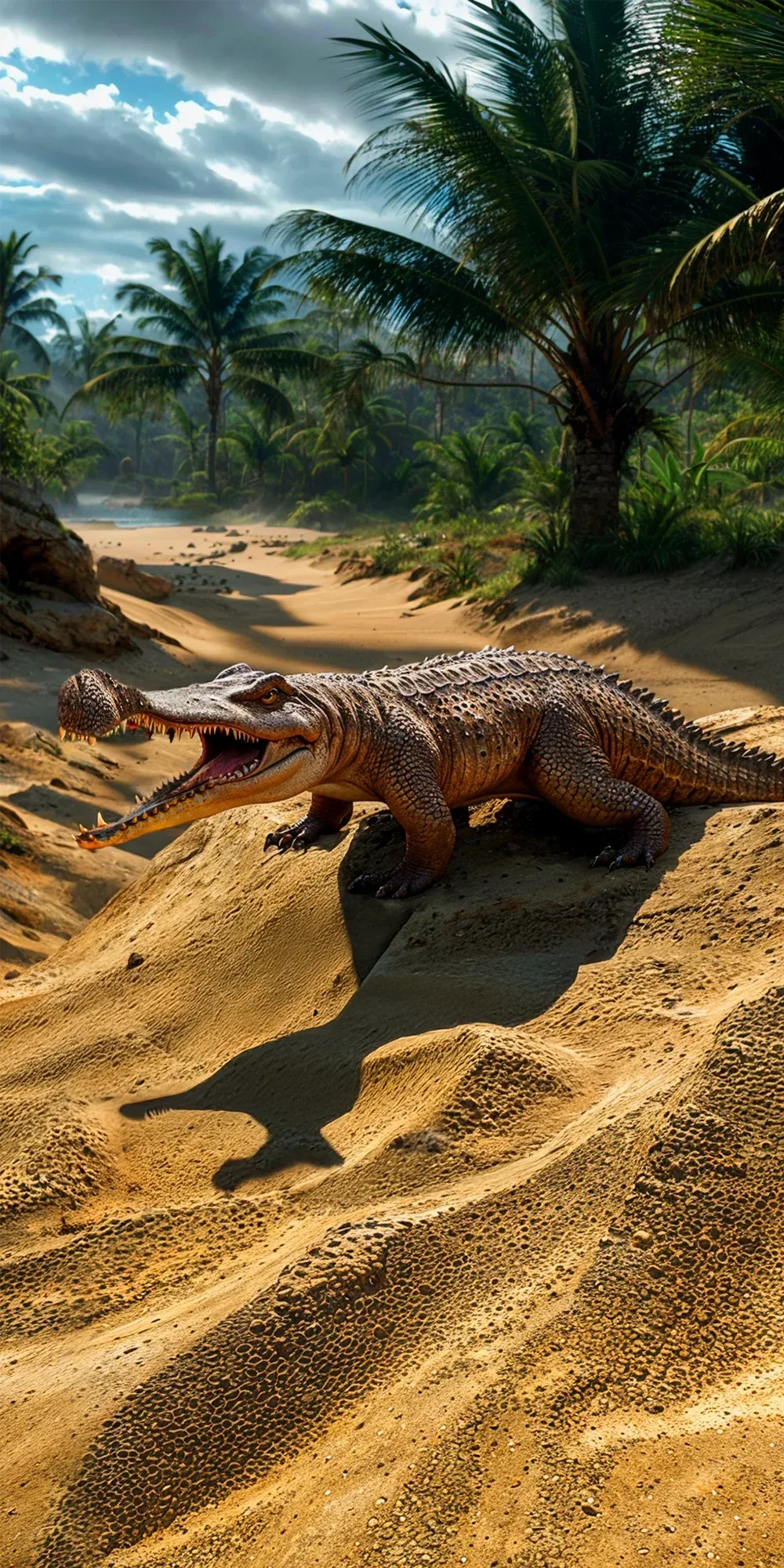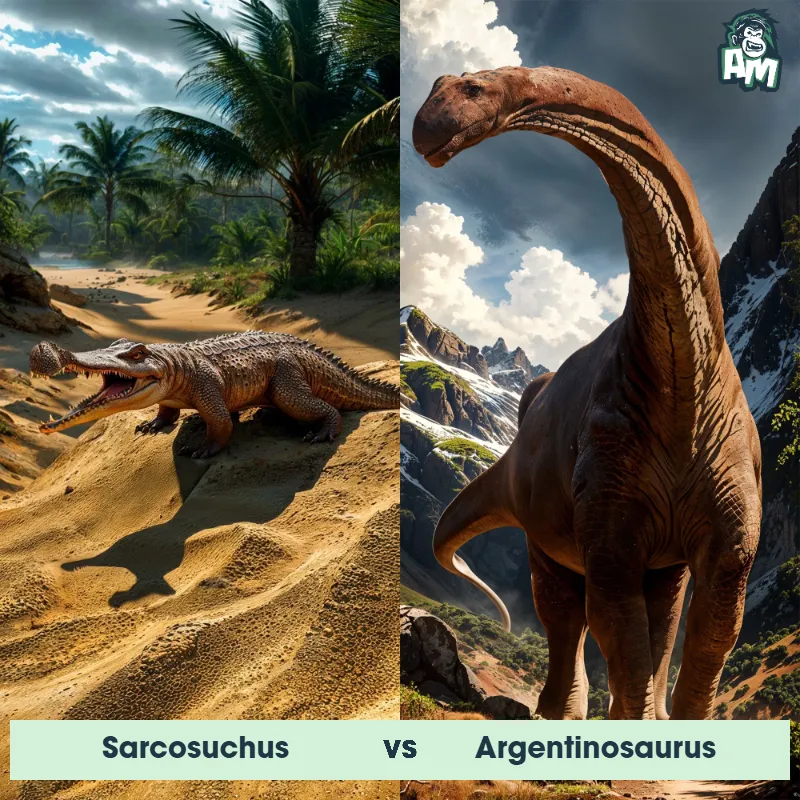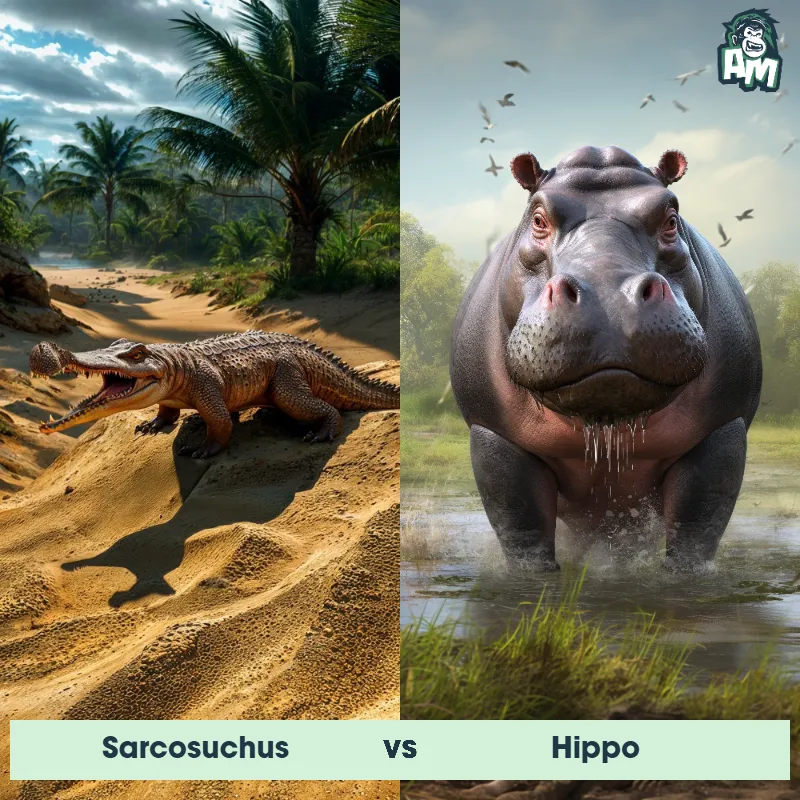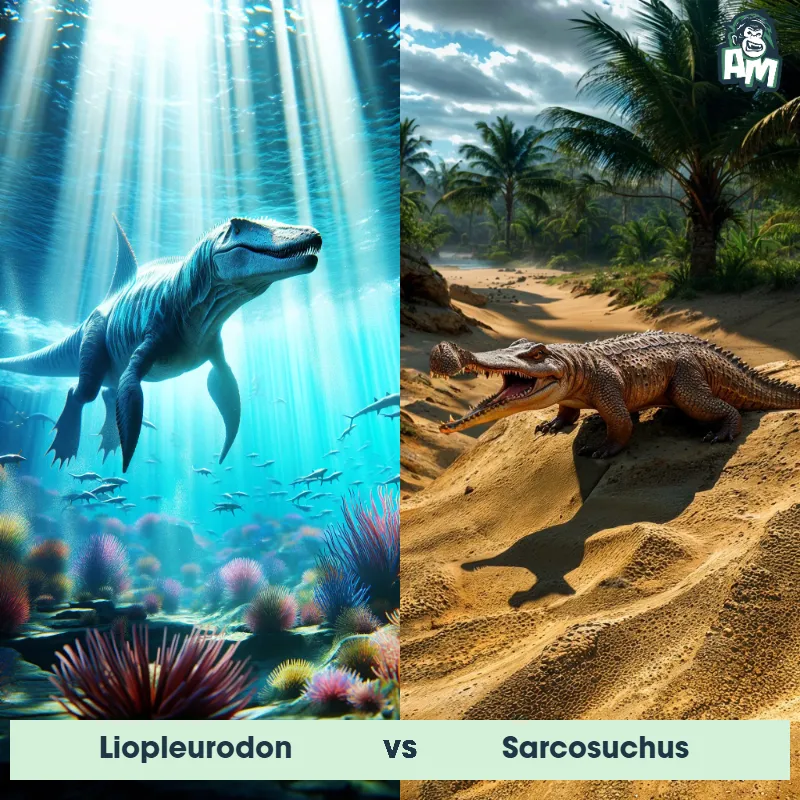The Sarcosuchus
Sarcosuchus, also known as SuperCroc, was a massive prehistoric crocodile that lived during the Cretaceous period. It had an elongated snout filled with sharp teeth, allowing it to easily catch prey in the water. With a length of up to 40 feet, Sarcosuchus was one of the largest crocodiles to ever exist, resembling a modern-day crocodile but on a much larger scale.

| Sarcosuchus | |
|---|---|
| Size | Up to 40 feet (12 meters) in length |
| Weight | Up to 8,000 pounds (3,600 kilograms) |
| Speed | 15-20 mph (24-32 km/h) |
| Key Strength | Powerful jaws for bone-crushing bites |
| Biggest Weakness | Slower movement on land |
| Scientific Name | Sarcosuchus |
| Family | Pholidosauridae |
| Habitat | Rivers and Wetlands |
| Geography | Africa |
| Diet | Large dinosaurs and other animals |
| Lifespan | 50 years - 60 years |

The Sarcosuchus
Sarcosuchus, also known as SuperCroc, was a massive prehistoric crocodile that lived during the Cretaceous period. It had an elongated snout filled with sharp teeth, allowing it to easily catch prey in the water. With a length of up to 40 feet, Sarcosuchus was one of the largest crocodiles to ever exist, resembling a modern-day crocodile but on a much larger scale.
Fun Fact: Sarcosuchus had one of the strongest bite forces of any known animal, with estimates suggesting that it could exert a force equivalent to that of a small car.
| Sarcosuchus | |
|---|---|
| Size | Up to 40 feet (12 meters) in length |
| Weight | Up to 8,000 pounds (3,600 kilograms) |
| Speed | 15-20 mph (24-32 km/h) |
| Key Strength | Powerful jaws for bone-crushing bites |
| Biggest Weakness | Slower movement on land |
| Scientific Name | Sarcosuchus |
| Family | Pholidosauridae |
| Habitat | Rivers and Wetlands |
| Geography | Africa |
| Diet | Large dinosaurs and other animals |
| Lifespan | 50 years - 60 years |
Sarcosuchus Matchups
We use AI to simulate matchups between the Sarcosuchus and other animals. Our simulation considers size, strength, and natural predatory behaviors to determine the most likely outcome.

Can't find the Matchup you want?
Create Your Own MatchupSarcosuchus: Diet, Predators, Aggression, and Defensive Behaviors
What did Sarcosuchus eat?
Sarcosuchus, also known as "super croc", primarily ate fish, turtles, and smaller dinosaurs. With its huge size and strong jaws, it was able to easily catch and consume large prey.
Did Sarcosuchus have any predators?
As one of the largest crocodile-like creatures to ever exist, Sarcosuchus did not have many natural predators. However, smaller predators like theropod dinosaurs or other large crocodiles may have posed a threat to young or injured Sarcosuchus individuals.
Was Sarcosuchus aggressive?
Sarcosuchus is believed to have been a solitary and ambush predator, displaying aggression towards potential prey when hunting. However, there is little evidence to suggest that they were aggressive towards other Sarcosuchus individuals outside of competition for mates or food.
Did Sarcosuchus fight?
Sarcosuchus likely engaged in territorial disputes or rivalries with other individuals, especially during mating season or for access to hunting grounds. These fights would have involved displays of size, strength, and dominance rather than prolonged physical combat.
How did Sarcosuchus defend themselves?
Sarcosuchus would have relied on their massive size, armored skin, and powerful jaws for defense against potential threats. Their ability to submerge themselves in water or mud also provided a degree of camouflage and protection from predators or competitors.
What was Sarcosuchus' biggest weakness in a fight?
Due to their large size and slow movement on land, Sarcosuchus would have been vulnerable to faster and more agile predators or competitors in a fight. Additionally, their reliance on water for hunting and cooling could also be exploited by enemies who could corner them on land.
Fun Fact: Despite its fearsome appearance, Sarcosuchus primarily fed on fish, turtles, and other aquatic creatures rather than large land animals.
Fun Fact: Sarcosuchus had a dual-mode of respiration, being able to breathe both through its lungs and through small holes on the top of its head while submerged underwater, similar to modern-day crocodiles.













